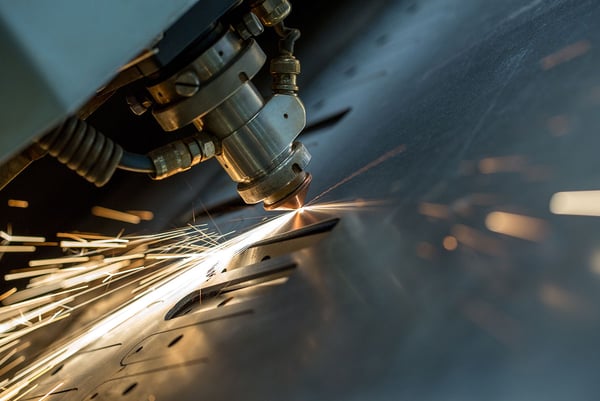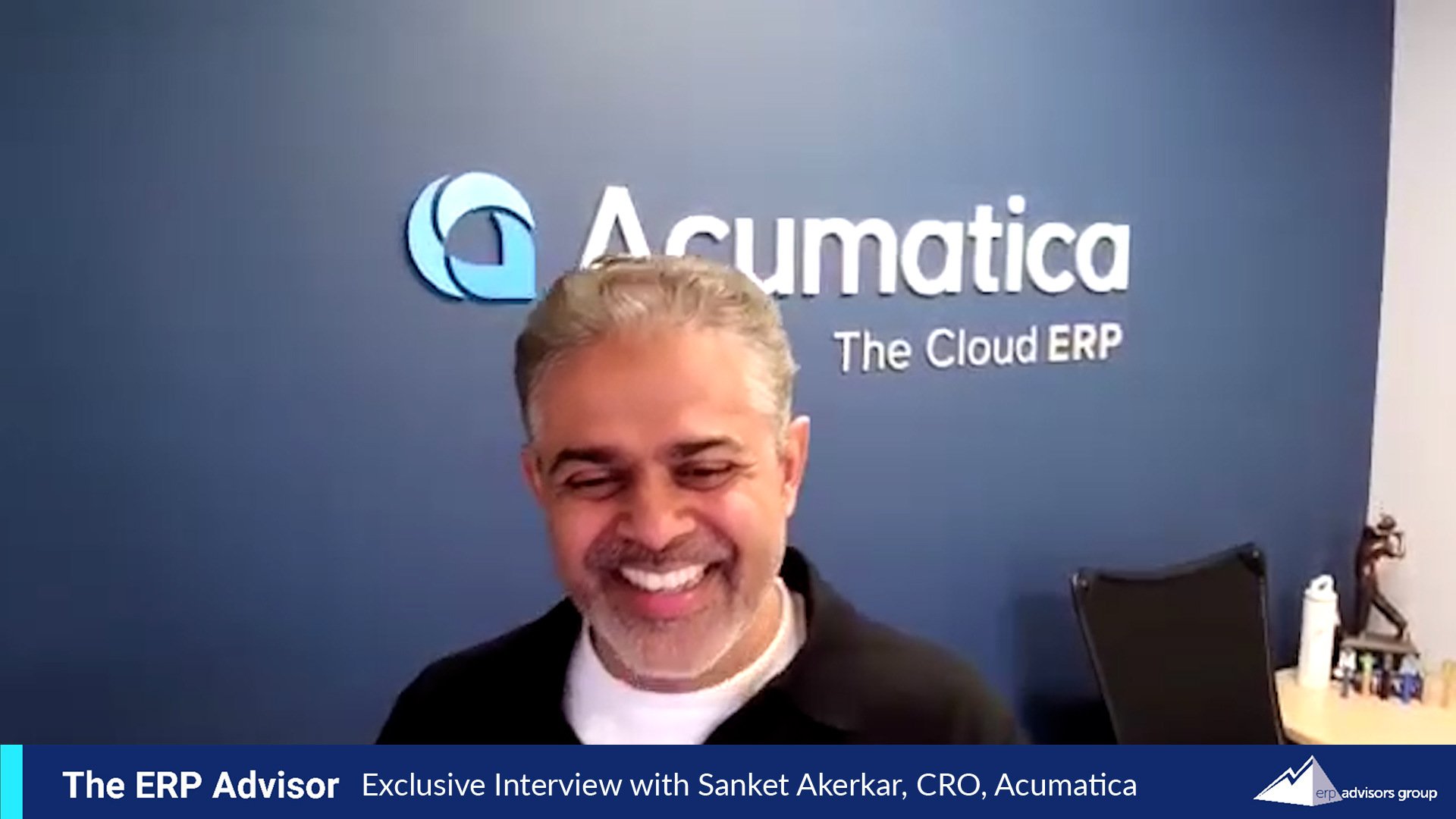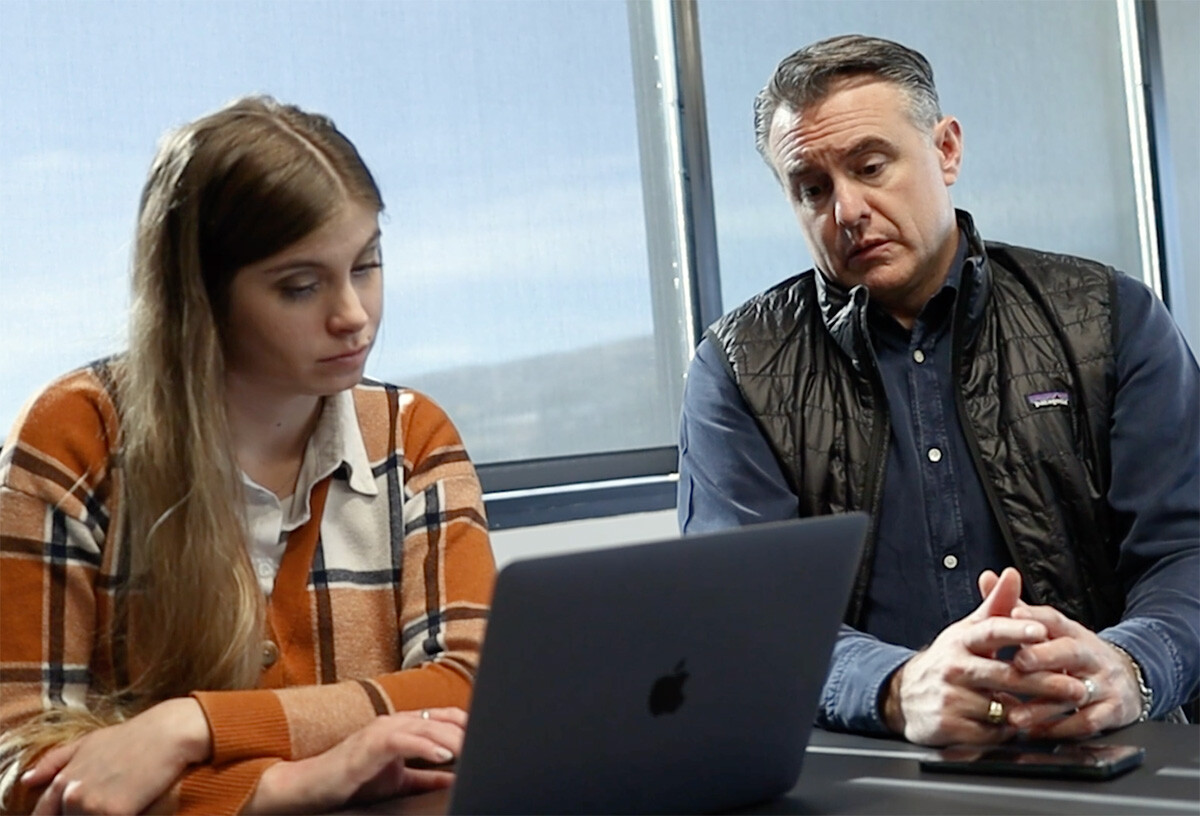
Here is a reality about manufacturing: there are separate-but-connected processes all under one operation. The challenge with that, of course, is finding a software platform that can manage it all.
The great news: ERP software is a perfect fit. It allows you to bring separate systems under one “roof,” including manufacturing, accounting, and shipping. You can synchronize your data across your organization from one single platform, eliminating the need to enter data more than once or pull information from multiple software platforms. ERP is flexible enough to allow you to plan, keep records of, report on, and make adjustments to your product workflow.
ERP software can be a game-changer for manufacturing organizations, without a doubt. But it doesn’t happen overnight. We generally see four steps in the evolution toward a modern manufacturing organization using an ERP system effectively:
Remediate
This step involves a whole lot of the mundane stuff like system data cleanup. Take our manufacturing client that has 10 locations. Over the years, they allowed their employees in all locations to enter items on sales orders via a freeform field. The end result was over 50,000 items—which means no great way to learn anything useful from their sales history. To really get the most out of their ERP system, they knew they needed to whittle this count down significantly.
An ERP platform is only effective at improving your processes and streamlining your operations when the data in your system is quality. You need it to be both accurate and uniform, which is why data cleanup is essential.
Advance
Manufacturing industry software is changing in light of the digitization of the entire sales cycle. Where sales reps used to bridge the gap between a manufacturer and the customer, there are now a multitude of ways that a company can put its products into the hands of buyers. In this stage, you begin to transform your organization’s sales cycle by making the sales process (from quote to order) more automated, expanding your reach through omnichannel, and making customers happier through a better buying process overall. Buying becomes faster, simpler, and more streamlined.
Innovate
This is where the fun begins! Once you’ve remediated your data and advanced your sales cycle, you can really get into some of the “bells and whistles” of your ERP software. You know: the reasons you were sold on going through such an implementation in the first place. One of our clients, a tape manufacturer, decided to approach end customers to ask what type of tape applications they needed. They used their modern-day ERP software platform to do design concepting and prototyping, put together bills of materials, and get their product out to market. This allowed them to easily replicate this process in other industries rather than having to reinvent every time.
Dominate
When you really put your ERP system to work, it can help you move to a dominant position in your industry. You’ll streamline your operations, automate in all kinds of places, and scale your business more easily. Soon, you’ll be able to take your business to the next level by responding to customer demand in a way that none of your competitors can.
We are not manufacturing experts at ERP Advisors Group, but we are ERP software experts! We guide our clients toward confident software selection that makes sense for them. Once they’ve put a system in place, we’ve seen them put that software to use in helping them gain valuable insights into their customers, speeding up their processes, and getting information they need to run their businesses effectively at the click of a button. That’s the real value of an ERP system and the business case behind doing ERP implementation—for manufacturing or any industry.
If you need help understanding how to transform your manufacturing business, contact the team at ERP Advisors Group today!
Juliette Welch: Good afternoon, everyone. Thank you so much for joining us for today’s call: How Manufacturing is Benefitting from Modern ERP.
Shawn Windle is our speaker for today. Shawn is the Founder and Managing Principal of ERP Advisors Group based in Denver, Colorado.
ERP Advisors Group is one of the country’s top independent software advisory firms. ERP Advisors Group advises mid to large sized businesses on selecting and implementing business applications from enterprise resource planning, customer relationship management, human capital management, business intelligence, and other enterprise applications which equate to millions of dollars in software deals each year across many industries.
On today’s call, Shawn will discuss how manufacturers are using modern manufacturing ERP to solve a number of challenges and provide invaluable benefits to their businesses.
Shawn, can I pass it to you?
Shawn Windle: Sure, yeah. And how’s the sound, Juliette?
Juliette: It’s very good.
Shawn: Good. Alright, thank you. Thanks everybody for dialing in and for jumping on our podcast.
I’m going to keep this one pretty quick. It’s a great topic though when you think about how modern ERPs are benefitting manufacturers in particular.
There’s a simple model that I’m going to go through today that’s kind of based off a model that NetSuite started — with a little bit of tweak to it.
But basically, we see companies in the manufacturing segment — and that could be really any type of manufacturing, whether it’s discrete, process, mixed mode, batch, recipes, whatever that organizations are making.
There’s a nice evolutionary or gradient scale that companies go through with ERP solutions around manufacturing. So, I’m going to go through that scale in a little bit of detail here.
So, just to kind of cover the whole thing first, we kind of see four steps to the evolution with the modern ERP for manufacturers.
The first one is called remediate, the second is advance, the third is innovate, and then the last one is dominate. There's a lot of “ate” in there. It's sort of like Opera Man from Saturday Night Live — or one of Adam Sandler’s characters used to have something with “ion” at the end or something.
So anyway, this is the “ate” at the end, so let me let me talk first about remediate and what that means around ERP.
So, if you think about — as a manufacturer the two areas in particular where we see a lot of remediation happen with a modern ERP are around data cleanup and costing.
So, the first one is on data — on bill of materials and item lists.
We have a client recently that has about ten locations and over the years their item field on their sales order was basically a free form field and so they would enter an item and each location would enter as many different items as they wanted to, even if it's the same thing, so we had an item list of about 50,000 items.
But after he went through and remediated, that list was down to about 2000. So, still a lot of items, but not as many.
So, data cleanup is definitely huge on the item list and the other area is bill of materials.
So again, over time we have to get orders out, we have to get in fast. And we can have many bill of materials that all really represent the build for a single assembly. And we have multiple bill of materials that represent that.
And so, what that leads to on the costing side is it's very difficult to compare how much did the same item cost that we just made versus the last time.
So, the modern ERP applications help to get those factors in and really remediate the situation because they enforce — it’s just easier to do click downs, drag and drop user experience is easier for a person on the shop floor to identify the items that we chose and then also for accounting to set up the costing.
So, getting that remediation step in is really important and gets the organization out of danger and into a situation where they're really ready to then do the next step, which is advance.
So, in the advance area where we see our manufacturers that have remediated their dangerous feeds, they really get into things like extra corporation communication. And what I mean by that is EDI and omnichannel just in general. I think we've done a presentation on what omnichannel means and you could certainly check that out.
But in a second advance step, this is where we really see like that corp-to-corp communication streamlining the communications and expediting communication speed of particle flow you could almost say, where our purchase order comes in from a vendor and it turns into a sales order and our system automatically — auto-magically as we like to say —through that data flow.
That's a fantastic way that organizations advance.
And then on the omnichannel, what we see there is that manufacturers are able to expose their products to more people through different channels.
For instance, there's a new energy bar in the market that you can only get in the cold, and I've tried him a couple times — I kind of like them. But somehow I got on their email list, so here I have the manufacturers sending me an email of these different kinds of bars and they had this one called birthday cake. I'm like, “Oh my God, that sounds amazing!” So, I ordered a box of birthday cake energy bars and they were okay but I left them out and they needed to be refrigerated.
But I never would have made that order — which by the way, then I added another box of bar while I did that order. That was direct from the manufacturer, I didn't go to Whole Foods, I didn’t go to target or whatever — that was directly the manufacturer.
So, this omnichannel presence is becoming more important for our manufacturers and we really see them be able to advance their position with the use of these modern day ERP technology tools like that.
But then, after you're advanced, now, we can really get into the cool stuff of innovation. So once things are in the normal condition, now we see our clients start to do things like, well, let's add something new. Let's do a new way of doing business that would really change the way that our industry works.
So, a good example of this is we have a client that's in the tape industry. They’re a distributor, but they also make some different applications of tape.
And what they've done to innovate is not just to be a wholesale distributor, but they've gone to their customers to say, well, what do you really want and need?
And especially some of their customers in the aerospace industry have said, hey, we've got this really unique application where we need something very specific, and so they said, we'll do it. And then they figure out how to do it, right?
Well, they can use modern day ERP to be able to do design of concept prototyping. And then be able to put together a bill of materials quickly, get something here for production to get a product out.
And along the way they're basically creating the path to continue to develop these innovative products. Not just do it the one time, but we continue to do it ongoing.
So the modern ERP really helps companies to innovate in that you have a much better record of what you're trying to do and how well you really did with it.
But you can also get products in the market really fast based off the very small micro vertical need that, then you can turn around and go to other organizations in that industry and replicate.
Versus before maybe you just put together, hey, here's this innovative product. Now we have to redo it ten times for the customers while we see our clients really innovating by using their ERP to be able to standardize those processes quickly and then be able to replicate.
So then, ultimately, what happens after the innovation step and — innovate, innovate, innovate — is you really come into a whole new normal of statistics which you could call dominate and you’re more of a market leader.
So, we have another client that's in the field distribution — they do some manufacturing, some value-added services, too.
And we have another client also in the seafood industry that I think has really gotten a dominant position. They’re interesting, they're going through this software change as we speak and what they've seen is to maintain and to even take that to that next level of being a dominant player in the marketplace, that they really do have to streamline their operations.
But to be able to kind of scale the business to the next level, they're like, okay, we really need to get in some automation here and be able to take their business processes that are pretty good today — actually really good — to that whole next level so that they can respond to customer demands in a way that none of their competitors can.
I think that's what really positions companies to be in this dominant space here with their modern ERP is that they can respond to customers literally instantaneously.
I mean, look, we're not manufacturing experts, we’re not even Six Sigma guys and gals, right? We're software people, that's what we do. We do it better than anybody else.
And we see that the companies can maintain and become both the dominant player in the marketplace.
These software applications can actually help them to keep that spot because they have more valuable insights on their customers. They understand their business processes and what their throughput actually is and what their cost models actually are. They also have a better feel for even their vendor lead times and what it really takes to get raw materials from China if there aren't tariffs or from wherever.
They have all this information that they literally have at the end of the fingertips. But they never had that before and that's ultimately the value that the modern day ERP provides to a manufacturer is all of the information about your enterprise is literally sitting at the click of a button.
Now you have to know where to click that button and pull the data from. And you need people to understand the database structures in that to get it. But with that information — and we really do see many of our clients get to this dominate position.
But of course, the key thing as I said here to summarize is there is a gradient scale or gradient steps that the clients go through with the ERP to get to that point.
Those steps again are remediate with data cleanup, costing, getting chart of accounts, all that stuff just in better shape, then advance where we see clients automate a lot of the intercompany communications with their vendors and customers and everybody else.
Then we see them innovate where they're starting to use their or ERP's to be able to do new ways of business and then finally they can get into this dominate market position.
So, it's pretty real, too. This isn't a bunch of marketing hoorah from the software salesperson.
I think most companies that we’ve worked with would even say that they can't do that gradient scale without enterprise software. So, good business case behind doing it.
If you have any questions let us know as always and like I said just in conclusion, remember the scale, don't try to dominate from day one with ERP. The vendors may try to sell that to you, don't buy it.
You have to clean up your house first. Then you have to do a little bit more to get things a little bit better. Then you have to look at things a little bit different with your business. And then we will get that dominate position.
So, appreciate you guys jumping on the call and Juliette, I'll pass back to you.
Juliette: Great, thank you so much, Shawn. Thank you again everyone for joining us for today's call. As Shawn said, please let us know if you have any questions. We're happy to answer them. You can reach out to us by phone, email, whatever works best for you.
Our next call is scheduled for July 16th: Making Digital Transformation Part of Your ERP Strategy. This next edition of The ERP Advisor we will discuss how many of today's ERP initiatives incorporate elements of digital transformation, where technology is headed, and if your business is ready.
Please go to our website erpadvisorsgroup.com for more details and to register. Thanks again.





